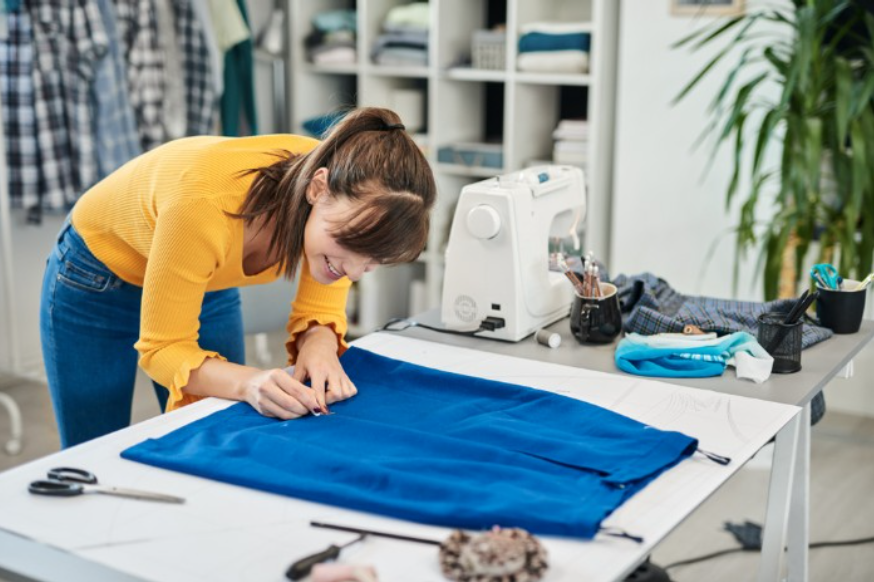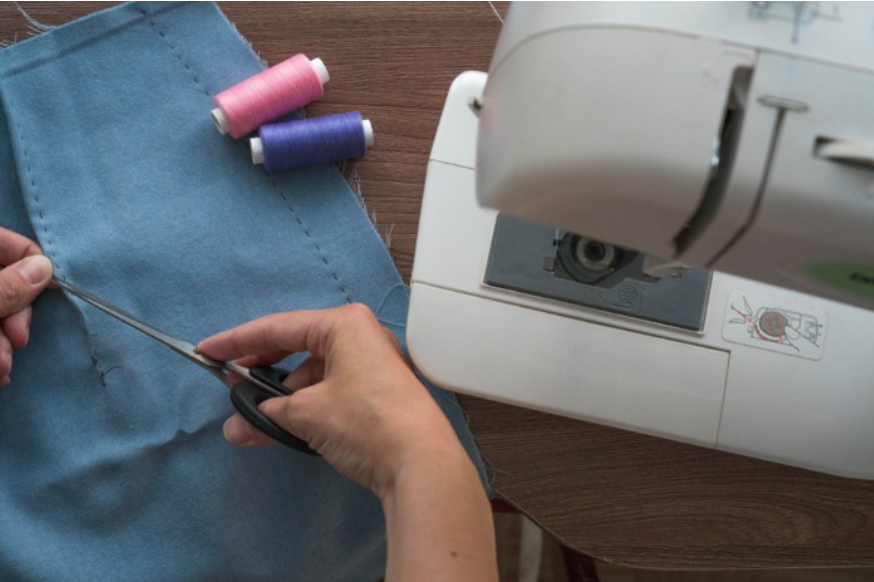
Subscribe To Emails
Subscribe to the YourCotton mailing list to receive updates on new arrivals and promotions (about once every 6 weeks)!

Do you love skirts but don’t know how to sew them? Have no fear! Sewing your skirt can be surprisingly easy and exciting. In just seven steps, you can go from viewing a simple pattern to wearing a gorgeous new skirt that fits perfectly as if made just for you. Let us walk through the process of selecting fabric, cutting out patterns, assembling pieces, and stitching seams with a machine or hand sewing - all without feeling overwhelmed. So grab scissors, thread, and needles because it's time to start making your perfect skirt!

Before you begin, make sure to gather the necessary supplies. How to sew a skirt requires a few basic items, including:
- Fabric
- Sewing machine/needles and thread
- Pattern
- Scissors, ruler, pins, or clips
- Measuring tape
Here are the seven steps you need to take to sew a skirt:
Step 1: Select Your Fabric
Choose a lightweight, breathable material like cotton fabric or linen for summer months and heavier fabrics such as wool, suede, or velvet for wintertime skirts. Consider the washability of the fabric when selecting; if you plan on washing and drying your skirt, look for machine-washable materials. Woven fabric will last longer than knit, but knits are easier to work with.
Step 2: Cut Out Your Pattern Pieces
Place the pattern on the fabric with the right side up and pin it securely in place. Cut out each piece carefully around pins to ensure accurate shapes and sizes. Repeat with other pieces if necessary; remember to include seam allowance. Waist measurement, length, and other measurements should be double-checked against the pattern before cutting.
Step 3: Assemble The Pieces
Once the individual pattern pieces are cut out, begin assembling them by laying them out flat on the table with their right sides facing up. Pin them together, matching notches and other indicators as indicated in the instructions for your chosen pattern. Easy skirt pattern assembly involves sewing a few curved seams along the sides and bottom of the skirt.
Step 4: Sewing The Darts
After assembling all the pieces, begin sewing darts to give your skirt shape and contours that fit your body perfectly. Take a few stitches at once back and forth to secure it, then go over each dart twice or more if desired.
Step 5: Joining Side Seams And Pockets
Once darts are sewn, join side seams together by stitching from the waist down to the hemline. Insert pocket pieces into position before closing the seam completely; keep pocket bottoms free so they can be flipped down after finishing the skirt.
Step 6: Attach Waistline Facing
With the right side of the fabric to the wrong side of the facing, attach the facing to the top edge of the skirt using a zipper foot on the machine and stitching around it two or three times for extra insurance. Secure seams with pins and excess trim thread.
Step 7: Hemming The Bottom
Turn up the hem 1/4 inch and press firmly in place, then turn up an additional 1/2 inch so that the raw edge is completely encased and pinned securely along the fold line. Stitch along the upper folded edge, removing pins as you go; if desired, straight stitch twice and finish off at the back seam with one or two buttonholes for an adjustable fit!
Skirts come in all shapes and sizes, from mini to maxi skirts and everything in between. Here are some of the most popular styles:

• A-line: This classic silhouette is fitted at the waist and gradually flares towards the hem.
• Pencil: As the name suggests, this style features a slim, straight shape that tapers down to the knee or ankle. Knit pencil skirt patterns are great for workwear.
• Wrap: Featuring overlapping panels of fabric fastened with ties or buckles, this style fits close to the body before flaring out from the hip.
• Skater: Also known as a circle skirt, this style typically falls just above the knee and has a complete gathered-skirt look for an extra feminine touch. Half-circle skirt patterns are great for beginners.
• Peplum: A figure-flattering choice with a flared hem that sits at or slightly below the waist.
• Tulip: This style is fitted at the waist and hip before flaring out in an A-line shape with a shorter length.
• Tiered or Ruffled: These skirts feature multiple panels of fabric layered over one another for volume and movement.
• High-low: A versatile silhouette, this style features a hem that dips lower in the back than it does in the front.
• Mermaid: Featuring an ultra-fitted cut that hugs the body before flaring out dramatically from mid-thigh to ankle.
Whether you’re looking for something casual or dressy, there’s sure to be a skirt style to fit your needs!
Can You Sew A Skirt Without A Pattern?
Yes, you can. Instead of using a pattern, use measurements to create the pieces for your skirt. Start by measuring your waist and hips and determining how long you want the skirt. From there, do some basic math to figure out the circumference of each piece and add seam allowances before cutting out fabric and stitching together!
What Is The Easiest Skirt To Sew?
The most accessible skirt style to sew is an A-line skirt. This classic silhouette features a fitted waist and gradually flares out towards the hem, making it easy to construct even for beginners. It’s also one of the most versatile styles that can be dressed up or down depending on your choice of fabrics and accessories!
How Long Does It Take To Sew A Skirt?
The time it takes to sew a skirt depends on many factors, such as fabric type, stitch length, and pattern complexity. Generally speaking, it can take an hour for a simple skirt with few seams to several hours or more for one with intricate details and pockets.
In conclusion, sewing a skirt doesn’t have to be intimidating! With the right supplies and patience, you can make your skirt that fits perfectly as if made just for you. Whether you choose an A-line, pencil, or any other style, there are countless ways to customize it with different fabrics and trimmings. So what are you waiting for? Get sewing and create something beautiful that is all your own!